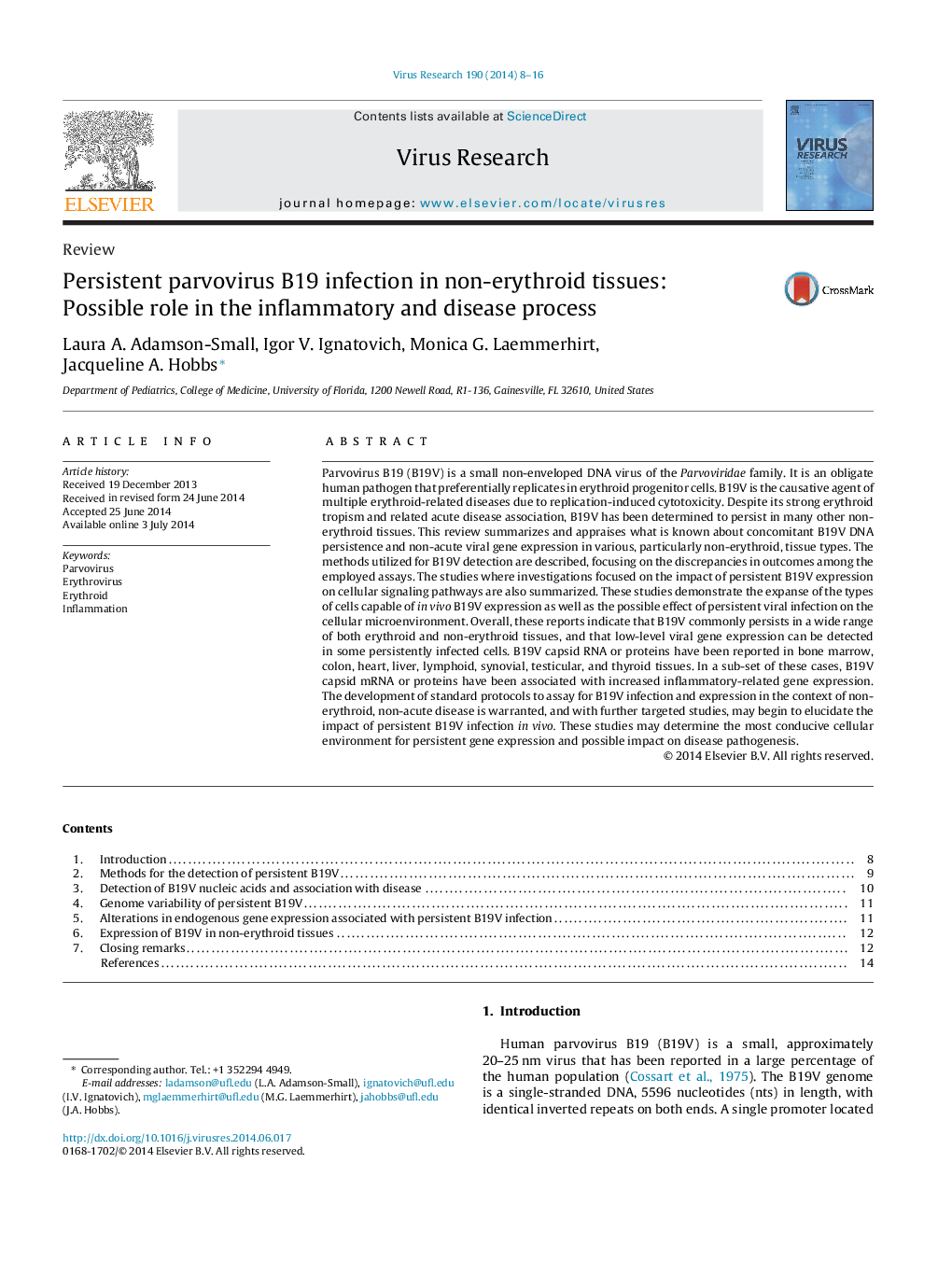| Article ID | Journal | Published Year | Pages | File Type |
|---|---|---|---|---|
| 6142373 | Virus Research | 2014 | 9 Pages |
â¢Detection of persistent B19V varies greatly between tissue types and depending on methods used for detection.â¢While B19V replication occurs primarily in erythroid tissues, viral expression has been reported in various non-erythroid cells in vivo.â¢Low-level viral mRNA and protein from persistent B19V has been reported in association with inflammation in multiple tissue types.
Parvovirus B19 (B19V) is a small non-enveloped DNA virus of the Parvoviridae family. It is an obligate human pathogen that preferentially replicates in erythroid progenitor cells. B19V is the causative agent of multiple erythroid-related diseases due to replication-induced cytotoxicity. Despite its strong erythroid tropism and related acute disease association, B19V has been determined to persist in many other non-erythroid tissues. This review summarizes and appraises what is known about concomitant B19V DNA persistence and non-acute viral gene expression in various, particularly non-erythroid, tissue types. The methods utilized for B19V detection are described, focusing on the discrepancies in outcomes among the employed assays. The studies where investigations focused on the impact of persistent B19V expression on cellular signaling pathways are also summarized. These studies demonstrate the expanse of the types of cells capable of in vivo B19V expression as well as the possible effect of persistent viral infection on the cellular microenvironment. Overall, these reports indicate that B19V commonly persists in a wide range of both erythroid and non-erythroid tissues, and that low-level viral gene expression can be detected in some persistently infected cells. B19V capsid RNA or proteins have been reported in bone marrow, colon, heart, liver, lymphoid, synovial, testicular, and thyroid tissues. In a sub-set of these cases, B19V capsid mRNA or proteins have been associated with increased inflammatory-related gene expression. The development of standard protocols to assay for B19V infection and expression in the context of non-erythroid, non-acute disease is warranted, and with further targeted studies, may begin to elucidate the impact of persistent B19V infection in vivo. These studies may determine the most conducive cellular environment for persistent gene expression and possible impact on disease pathogenesis.
